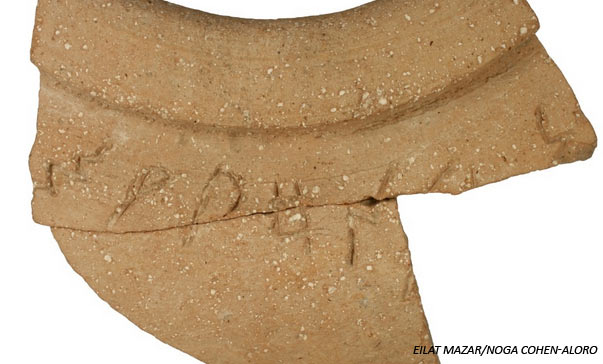Expert Cracks Code of 3,000-Year-Old Inscription with Dramatic Implications for the Bible
Earlier this month we reported on the discovery of a 3,000-year-old pottery fragment, now known as the Ophel Inscription, near the Temple Mount in Jerusalem, inscribed with the earliest written text ever discovered in the region. Researchers had concluded that it must have been an early form of Canaanite language because it was believed that Hebrew was not the dominant language at the time. However, a linguistic expert has just cracked the code, which may have profound implications for our understanding of the Bible.
Douglas Petrovich, a biblical studies expert, studied the fragment and found that the language is actually the oldest form of written Hebrew, placing the ancient Israelites in Jerusalem earlier than previously believed.
"Hebrew speakers were controlling Jerusalem in the 10th century, which biblical chronology points to as the time of David and Solomon," said Petrovich. "Whoever they were, they were writing in Hebrew like they owned the place," he said.
However, while finding the oldest form of written Hebrew is significant, what is even more important is the ramification this has for our understanding of the Old Testament. If Hebrew as a written language did in fact exist in the 10 th century BC, the ancient Israelites were recording the accounts presented in the Old Testament in real time as opposed to hundreds of years later. This, Petrovich has claimed, provides evidence that the Old Testament is an historical account of real-life events and not simply tales passed on over the centuries.
According to Petrovich, the initial announcement that the inscription was an early form of Canaanite language occurred because archaeologists wanted to avoid controversy and were therefore unwilling to say that it was Hebrew.
"It's just the climate among scholars that they want to attribute as little as possible to the ancient Israelites," he said.
However, some archaeologists have warned against jumping to conclusions too quickly. Although there have been a number of similar items from the same time period found across Israel in the past five years, archaeologist Yossi Garfinkel said: "When we find more and more of these inscriptions, maybe not until the next generation, we may have a breakthrough".
In the past decade, there has been a revival in Israel of archaeologists looking for historical evidence of Biblical stories, and with some success. Most recently, a team of archaeologists claimed to have found the possible palace of King David, overlooking the valley where the Hebrew king was victorious against the giant Goliath. And just a few days ago, researchers announced that they may have found the home of Old Testament prophet Elisha.
For now, the accuracy of the Bible remains the subject of heated debate but perhaps in time the real truth will be revealed.




















Comments
Petrovich is a well educated and knowledgeable scholar.
I was pleased to see his name. Thank you for the article, hopefully it can shed the right kind of light on biblical history.